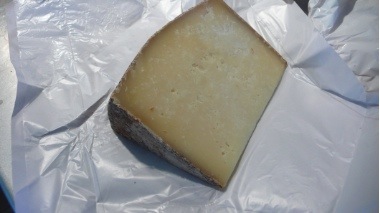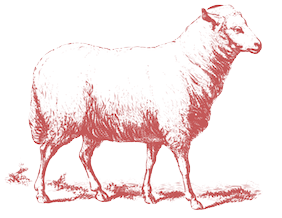 Back in November, I had the pleasure of attending a brief talk at the Great Lakes Dairy Sheep Symposium from Carol Delaney of UVM who spent a good bit of time in Sardinia, learning about their cheesemaking practices. She came back with slides and stories, mostly about the manufacture of Pecorino Sardo, or Sardinian Pecorino. Sardinia, though a part of unified Italy, like all the Italian regions, has its own particular culture that it zealously protects. Indeed, you would be remiss if you were to lump Sardinia, or Tuscany, or Umbria into the broad category being merely "Italian". Pecorino, as a general term, is a hard, aged, sheep's milk cheese (pecora means sheep, or hoofed ruminant in Italian). You are probably familiar with the well-known Pecorino Romano cheese, or Roman Pecorino. The region Lazio, where Pecorino Romano is made, lies in the central western coast of the peninsula and has its own terroir that is different from that of the island of Sardinia, about 125 miles to its west. In general, Sardinia is much drier and hotter than Lazio, yielding different conditions for the grass, the sheep, and the aging process of their version of Pecorino. According to Ms. Delaney, it is quite difficult to get hold of true Pecorino Sardo. The Sardinians covet it and keep it mostly for themselves.
Back in November, I had the pleasure of attending a brief talk at the Great Lakes Dairy Sheep Symposium from Carol Delaney of UVM who spent a good bit of time in Sardinia, learning about their cheesemaking practices. She came back with slides and stories, mostly about the manufacture of Pecorino Sardo, or Sardinian Pecorino. Sardinia, though a part of unified Italy, like all the Italian regions, has its own particular culture that it zealously protects. Indeed, you would be remiss if you were to lump Sardinia, or Tuscany, or Umbria into the broad category being merely "Italian". Pecorino, as a general term, is a hard, aged, sheep's milk cheese (pecora means sheep, or hoofed ruminant in Italian). You are probably familiar with the well-known Pecorino Romano cheese, or Roman Pecorino. The region Lazio, where Pecorino Romano is made, lies in the central western coast of the peninsula and has its own terroir that is different from that of the island of Sardinia, about 125 miles to its west. In general, Sardinia is much drier and hotter than Lazio, yielding different conditions for the grass, the sheep, and the aging process of their version of Pecorino. According to Ms. Delaney, it is quite difficult to get hold of true Pecorino Sardo. The Sardinians covet it and keep it mostly for themselves.
During the talk, I was excited most by the slides of the Sardinian cheesemakers burying their Pecorino Sardo in hot ashes to produce Fiore Sardo. Now, I'm not generally a big fan of smoked cheeses. Usually the smoked flavor becomes a mask that overwhelms the flavor of the cheese itself; all you taste is smoke. But as a sometime potter, this slide reminded me so much of the process of ash firing ceramics that I had to try a cheese that was made using the same technique. So, you can imagine that when it finally came in at the cheesemonger, I was very excited to see it.
If you're going to have a smoked cheese, this is the one to try. The taste of smoke is clearly present, but truly enhances the overall flavor of the cheese, punching out its earthy tang. When I taste it I get lots of roasted sweet aromatics like caramelized onion. It also has a garlic-like piquantness that mingles with the lactic flavors really nicely. And of course, the smokey complexity of the cheese yields a strong sense of umami. The rind is especially interesting. It tastes like a garden store or nursery: loads of soil, greenery, and fertilizer aromas. Overall, as a fine D.O.P. cheese, I give it a 3.
